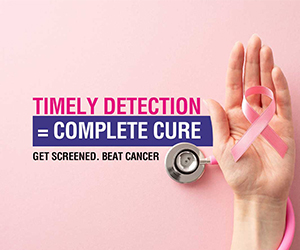Teenage Sexuality Myths: Understanding Adolescent Development and Behavior
Separate myth from reality about teenage sexuality and development. Evidence-based facts about adolescent sexual behavior and health.

Post: Teenage Sexuality Myths: Understanding Adolescent Development and Behavior
Teenage sexuality remains one of the most misunderstood aspects of adolescent development, surrounded by myths that can harm young people and hinder effective support systems. These misconceptions often stem from adult anxieties, outdated information, or cultural biases rather than scientific evidence about adolescent development. Understanding the reality of teenage sexuality is crucial for parents, educators, and communities working to support healthy adolescent development.
Myth 1: Teenagers Are Naturally Promiscuous and Reckless
One of the most damaging myths portrays teenagers as inherently driven by hormones with no capacity for thoughtful decision-making about sexuality. This stereotype suggests that adolescents cannot make responsible choices about their sexual behavior.
Research paints a different picture of teenage sexuality. Data from the Centers for Disease Control shows that sexual activity among teenagers has actually declined significantly over the past three decades. In 2019, fewer than 40% of high school students reported ever having sexual intercourse, compared to over 50% in the 1990s.
When teenagers do become sexually active, many demonstrate responsible behavior. Studies show increasing condom use among sexually active teens and greater awareness of sexual health risks. While adolescent brain development does affect decision-making, teenagers are capable of making thoughtful choices when provided with accurate information and support.
The myth of inherent teenage recklessness can become a self-fulfilling prophecy when adults expect poor decisions and fail to provide the guidance and resources young people need to make healthy choices.
Myth 2: Comprehensive Sex Education Increases Sexual Activity
Despite extensive research to the contrary, the myth persists that teaching teenagers about sexuality encourages them to become sexually active earlier or more frequently.
Multiple systematic reviews involving hundreds of studies consistently show that comprehensive sex education delays sexual initiation rather than encouraging it. Programs that provide complete, accurate information help teenagers understand the implications of sexual activity and make more informed decisions about timing.
A study published in the Journal of Adolescent Health found that teens receiving comprehensive sex education were 50% less likely to experience pregnancy compared to those receiving abstinence-only education. This suggests that comprehensive programs actually support more cautious decision-making about sexual activity.
The programs work by developing critical thinking skills, improving communication abilities, and helping teenagers understand the emotional, physical, and social aspects of sexual relationships.
Myth 3: Teenagers Don't Care About Emotional Connections
Popular culture often portrays teenage sexuality as purely physical, suggesting that adolescents are not interested in emotional intimacy or meaningful relationships.
Research on adolescent relationships reveals that emotional connection is extremely important to most teenagers. Studies show that the majority of sexually active teens report being in love with their partners and view their relationships as serious and meaningful.
Teenagers often struggle with intense emotions and may not always express them in ways adults recognize or approve of, but this doesn't mean emotional connections are absent. Many adolescents report that emotional readiness is an important factor in their decisions about sexual activity.
Understanding that teenagers value emotional intimacy can help adults provide better guidance about healthy relationships and the emotional aspects of sexuality.
Myth 4: Talking About Sex With Teens Encourages Sexual Activity
Many parents avoid discussing sexuality with their teenagers, fearing that these conversations will encourage sexual experimentation or suggest parental approval of sexual activity.
Research consistently shows the opposite effect. Adolescents who have open, ongoing conversations with parents about sexuality are more likely to delay sexual activity and more likely to use protection when they do become sexually active.
Parent-teen communication about sexuality is associated with better sexual health outcomes, including lower rates of sexually transmitted infections and unintended pregnancy. It also strengthens the parent-child relationship and improves overall communication.
The key is creating ongoing dialogue rather than single awkward conversations, providing accurate information, and discussing family values alongside factual health information.
Myth 5: All Teenagers Are Sexually Active by High School Graduation
This myth creates pressure for teenagers who aren't sexually active and can make them feel abnormal or behind their peers in development.
Current data shows significant diversity in teenage sexual experience. While some teenagers become sexually active during high school, many do not. According to recent CDC data, about 40% of high school seniors report never having sexual intercourse.
This variation is normal and reflects different rates of physical, emotional, and social development. Some teenagers feel ready for sexual relationships during high school, while others prefer to wait until they're older, in college, or in committed adult relationships.
Recognizing this diversity helps reduce pressure on teenagers and supports individual decision-making about sexual activity timing.

Myth 6: Teenage Sexual Orientation Is Just a Phase
This harmful myth suggests that non-heterosexual orientations expressed during adolescence are temporary or attention-seeking behaviors that teenagers will outgrow.
Research on sexual orientation development shows that while some fluidity exists, particularly among women, sexual orientation typically becomes apparent during adolescence and remains relatively stable throughout life. For many LGBTQ+ individuals, teenage years represent the time when they first recognize and acknowledge their sexual orientation.
Dismissing teenage expressions of sexual orientation as "phases" can be deeply harmful, preventing young people from receiving appropriate support and potentially contributing to mental health problems including depression and suicide risk.
Supporting teenagers in exploring their identity, regardless of sexual orientation, promotes healthy development and emotional wellbeing.
Myth 7: Teenage Pregnancy Is Always Unplanned and Unwanted
While most teenage pregnancies are unintended, the myth that all teen pregnancies result from ignorance or accident overlooks the complex factors that influence adolescent reproductive decisions.
Some teenage pregnancies reflect deliberate choices, particularly among older adolescents in stable relationships. Others occur in contexts where pregnancy may represent hope for independence, adult status, or emotional connection.
Understanding the varied circumstances surrounding teenage pregnancy helps develop more effective prevention strategies and more supportive interventions for pregnant and parenting teens.
Addressing the underlying factors that make pregnancy appealing to some teenagers—such as limited educational or economic opportunities—may be more effective than focusing solely on pregnancy prevention education.
Myth 8: Boys and Girls Experience Sexuality Differently
Traditional gender stereotypes suggest that teenage boys are primarily interested in physical aspects of sexuality while girls focus on emotional connections. These myths can limit healthy sexual development for all adolescents.
Research shows that both teenage boys and girls value emotional intimacy in relationships, though they may express it differently. Boys often face pressure to appear sexually experienced and emotionally detached, while girls may face conflicting messages about sexual desire and behavior.
These gendered expectations can prevent teenagers from developing authentic relationships and healthy sexual attitudes. Boys may suppress emotional needs while girls may suppress sexual agency and desire.
Supporting all teenagers in developing both emotional intelligence and sexual health awareness promotes healthier outcomes regardless of gender.

Myth 9: Peer Pressure Is the Primary Driver of Teenage Sexual Behavior
While peer influence exists, the myth that teenagers are simply victims of peer pressure oversimplifies the factors influencing adolescent sexual behavior and removes agency from young people's decision-making.
Research shows that while peers do influence teenage sexual behavior, the relationship is complex. Teenagers often select peer groups that share similar values and behaviors, making it difficult to separate peer influence from personal choice.
Family relationships, individual personality factors, academic engagement, and future goals also significantly influence teenage sexual behavior. Many teenagers report making sexual decisions based on their own readiness and relationship circumstances rather than peer pressure alone.
Understanding multiple influences on teenage sexuality helps adults provide more effective guidance and support.
The Reality of Adolescent Sexual Development
Healthy adolescent sexual development involves gradual exploration of identity, relationships, and physical intimacy within the context of cognitive and emotional maturation. This process varies significantly among individuals but generally includes developing awareness of sexual feelings, forming romantic relationships, and learning about sexual health and responsibility.
Most teenagers navigate this development successfully when provided with accurate information, supportive relationships with adults, and opportunities to develop decision-making skills. Problems arise more often when teenagers lack these supports rather than from inherent characteristics of adolescent sexuality.
Supporting Healthy Development
Understanding the reality of teenage sexuality, rather than relying on myths, enables parents, educators, and communities to provide better support for adolescent development. This includes providing comprehensive, age-appropriate education about sexuality, maintaining open communication, and creating environments where teenagers feel safe seeking guidance.
Supporting healthy teenage sexual development also requires addressing broader factors that influence adolescent behavior, including educational opportunities, mental health support, and positive youth development programs.

Moving Beyond Myths
Myths about teenage sexuality often reflect adult anxieties more than adolescent realities. By examining evidence about adolescent development and behavior, we can replace fear-based approaches with supportive strategies that actually promote healthy outcomes.
When adults understand teenage sexuality as a normal part of development that can be supported and guided rather than feared or suppressed, young people benefit from more effective education, communication, and support systems that prepare them for healthy adult relationships and sexual wellbeing.











